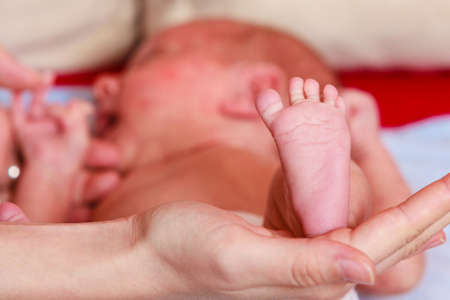Overview of Birthing Options in the UK
When it comes to giving birth in the UK, expectant parents have a range of choices designed to suit different needs and preferences. The most common birthing options include hospital births, home births, birth centres, and midwife-led units. Each setting offers distinct benefits and levels of medical intervention, making it important for families to consider what best aligns with their personal circumstances and comfort levels. Hospital births are typically chosen for their access to specialist care and advanced medical support, especially in cases where complications may be anticipated. Home births offer a familiar and comfortable environment, allowing parents more control over the birthing experience with the support of trained midwives. Birth centres provide a homely atmosphere while still being equipped for straightforward deliveries, often located within or near hospitals for added reassurance. Midwife-led units focus on natural birth approaches with minimal intervention and are an appealing option for those seeking a balance between professional guidance and a relaxed setting. Understanding these main birthing options is the first step towards making an informed decision about where and how to welcome your new arrival across the UK.
2. Geographical Differences in Access
The accessibility and availability of birthing options across the UK can vary significantly depending on where you live. Urban and rural areas offer different levels of access to maternity services, and these differences are further influenced by regional variations between England, Scotland, Wales, and Northern Ireland.
Urban vs Rural Access
For expectant parents living in urban centres such as London, Manchester, or Glasgow, a broader range of birthing options—like midwife-led birth centres, home births, and consultant-led hospital units—are typically more readily available. These locations often benefit from better public transport links, shorter travel times to hospitals, and a higher concentration of specialist staff.
In contrast, those in rural or remote areas may face longer travel distances to reach maternity units, limited choice between types of birth settings, and fewer community midwives. In some parts of the UK, rural hospitals have consolidated maternity services, meaning families might need to travel hours for hospital-based care or specialist interventions.
Regional Variations: England, Scotland, Wales, and Northern Ireland
| Region | Main Birthing Options | Typical Accessibility Challenges |
|---|---|---|
| England | Wide choice: hospital birth, midwife-led unit, home birth | Greater variety in cities; rural areas can face closures of smaller units |
| Scotland | Mainly hospital births; some midwife-led units in larger towns | Remote communities may need air/road transfer; weather can impact access |
| Wales | Mix of hospital and community-based care | Sparser population means longer distances to facilities; fewer home birth teams |
| Northern Ireland | Mainly hospital-based with limited midwife-led units | Centralisation of services has increased travel for many families |
Local NHS Trusts and Commissioning Boards
The structure of local NHS Trusts or Health Boards also plays a role. Some regions have invested in community midwifery and promoted home births or freestanding birth centres; others have centralised services due to funding or staffing challenges.
Impact on Choice and Experience
The result is that the choice and experience available to parents-to-be can depend heavily on postcode. While city dwellers may enjoy greater flexibility and a higher standard of facilities, those in rural parts of the UK often need to plan carefully—sometimes making difficult decisions about where and how they give birth based on proximity rather than personal preference.
![]()
3. NHS vs Private Sector Choices
When it comes to giving birth in the UK, expectant parents are faced with the decision of choosing between NHS-provided maternity care and private sector facilities. Each option comes with its own set of advantages and considerations, particularly regarding accessibility, waiting times, costs, and range of available services.
Waiting Times and Accessibility
The NHS remains the primary provider of maternity services across the UK, offering comprehensive antenatal, birth, and postnatal care free at the point of use. However, one of the most common concerns is waiting times. While emergency cases are always prioritised, routine appointments and non-urgent procedures can sometimes be subject to delays, especially in areas where maternity units are under pressure. In contrast, private clinics often offer quicker access to appointments and more flexible scheduling, allowing parents to plan scans and consultations at their convenience.
Costs and Financial Considerations
One of the biggest differentiators between NHS and private care is cost. All NHS maternity services are funded through general taxation, meaning there are no direct charges for patients who qualify for care under the system. On the other hand, private sector care can be significantly expensive, with packages for antenatal care, delivery (whether vaginal or caesarean), and postnatal support often running into thousands of pounds. Some families opt for a mix—using NHS services for standard care while paying privately for extras such as additional scans or private rooms.
Range and Quality of Services
The NHS offers a wide variety of birthing options including consultant-led hospital units, midwife-led birthing centres, and home births (subject to availability in your region). While private hospitals may not have the same breadth of emergency facilities as large NHS units, they often provide more luxurious environments, increased privacy, and enhanced amenities such as ensuite rooms or personalised meal plans. Some private providers also offer continuity of carer models and extra support services such as lactation consultants or physiotherapists.
Making an Informed Choice
Ultimately, the choice between NHS and private sector maternity care in the UK hinges on individual priorities—be it speed of access, cost-effectiveness, type of birthing environment desired, or specific medical needs. It’s worth weighing up the pros and cons based on your location, budget, and preferences to ensure you select the best possible option for your family’s circumstances.
4. Support Services and Resources
When considering the accessibility and availability of birthing options across the UK, it is essential to review the comprehensive support network offered to expectant parents before, during, and after birth. This includes both NHS-funded and private services that play a vital role in ensuring positive birth experiences.
Antenatal Classes
Antenatal classes are widely available across the UK, with most NHS trusts offering free group sessions that cover topics such as pain relief, birth planning, infant feeding, and newborn care. Private providers also offer tailored classes, often focusing on hypnobirthing or specific cultural needs. Booking early is advisable, especially in high-demand areas like London or Manchester, where spaces can fill quickly.
Health Visitors
Health visitors are a cornerstone of postnatal support in the UK. These registered nurses or midwives provide home visits and clinic appointments from late pregnancy through the early years of your child’s life. They advise on feeding, sleeping routines, mental health, and development milestones. Access is universal through the NHS, but frequency of visits may vary by region due to local resource allocation.
Doula Services
Doulas offer emotional and practical support during pregnancy, birth, and the postnatal period. While not regulated by the NHS, many families choose to hire doulas privately for continuous one-to-one care—especially when aiming for home births or seeking advocacy within hospital settings. Coverage varies: urban centres generally have more available doulas than rural areas.
Comparison of Key Support Services
| Service | NHS Availability | Private Options | Regional Variation |
|---|---|---|---|
| Antenatal Classes | Free & Widespread | Specialised Courses (e.g., Hypnobirthing) | More variety in cities; limited rural access |
| Health Visitors | Universal (NHS) | Limited/Not common | Frequency may differ by area |
| Doula Services | No (self-funded) | Numerous agencies & individuals | Easier access in cities; rural scarcity |
Tips for Expectant Parents
– Check with your local NHS trust early for class availability
– Consider combining NHS and private services for bespoke support
– Ask about virtual options if transport or mobility is an issue
– Explore community groups for additional peer support
– Review local directories for doula recommendations if you want extra advocacy during labour and birth
5. Challenges and Barriers to Choice
The landscape of birthing options across the UK is shaped by a variety of challenges and barriers that can significantly limit the choices available to expectant parents. One of the most pressing issues is funding cuts within the NHS and local health authorities. Over recent years, many maternity units have faced budget reductions, which has led to the consolidation or closure of some services, particularly in rural or less populated areas. This often results in fewer options for women who might otherwise wish to consider alternative settings such as midwife-led units or home births.
Staffing shortages represent another critical barrier. The UK faces an ongoing shortage of midwives and specialist obstetric staff, which can compromise both the quality and range of care provided. When staff are stretched thin, hospitals and birthing centres may be forced to prioritise safety by restricting access to certain birthing options—sometimes suspending home birth services altogether due to insufficient personnel to guarantee safe care.
Policy differences between England, Scotland, Wales, and Northern Ireland further complicate the accessibility and availability of birthing options. While national guidelines provide a framework, local commissioning groups or health boards have significant leeway in how services are organised and funded. This results in a ‘postcode lottery’ where the choices available to pregnant women can differ dramatically depending on where they live. For example, water birth facilities or continuity-of-care models may be widely accessible in some regions but entirely unavailable in others.
Additionally, transportation and geographical barriers disproportionately affect those living in remote or underserved communities. Women in these areas may have to travel significant distances for their preferred birthing setting, which can deter them from making certain choices due to concerns about safety or convenience during labour.
Ultimately, while there has been progress in expanding birthing options across the UK, these systemic challenges must be addressed to ensure genuine choice for all families—regardless of location or circumstance.
6. Recent Trends and Future Developments
As the landscape of childbirth in the UK continues to evolve, several notable trends are shaping both accessibility and availability of birthing options. A significant shift has been observed towards more personalised care, with NHS Trusts increasingly offering bespoke birth plans that accommodate individual preferences, whether that’s home births, water births, or midwife-led units. This move is driven by a growing recognition of the importance of choice and autonomy for expectant parents.
Another key trend is the integration of digital health solutions. Virtual antenatal classes, remote consultations with midwives, and digital monitoring tools have become more common, particularly since the Covid-19 pandemic highlighted the need for flexible care delivery. These innovations help bridge gaps for those in rural or underserved communities, improving both access and continuity of care.
The government and healthcare providers are also piloting new initiatives to address disparities in maternity services across different regions. For instance, targeted investment in areas with historically limited access to birth centres aims to ensure more equitable availability of options nationwide. Additionally, programmes focusing on cultural competency and language support are being expanded to better serve diverse communities throughout the UK.
Looking ahead, expectant parents can anticipate further improvements in both choice and quality of care. The push for increased funding and recruitment of midwives is expected to reduce waiting times and provide more consistent support during pregnancy and labour. There is also ongoing research into the benefits of continuity of carer models, which could soon become standard practice, ensuring that women see the same team throughout their maternity journey.
In summary, while challenges remain—particularly around staffing levels and regional differences—the future for birthing options in the UK appears promising. With continued innovation and investment, parents-to-be can look forward to a broader range of accessible choices, supported by compassionate and high-quality care tailored to their individual needs.


